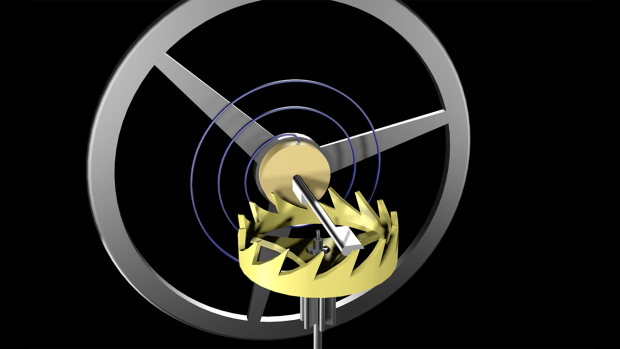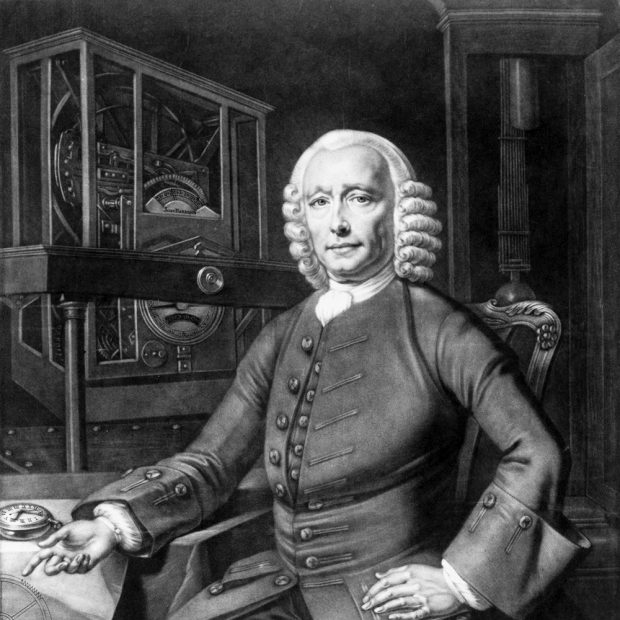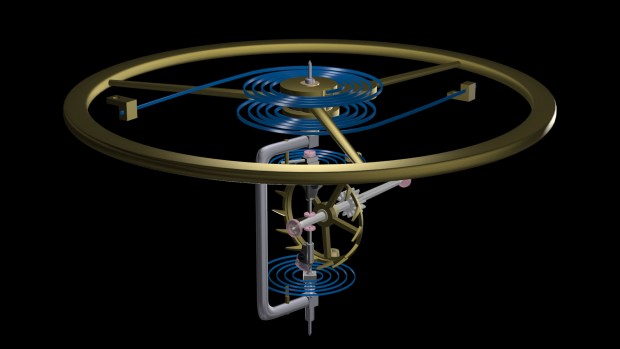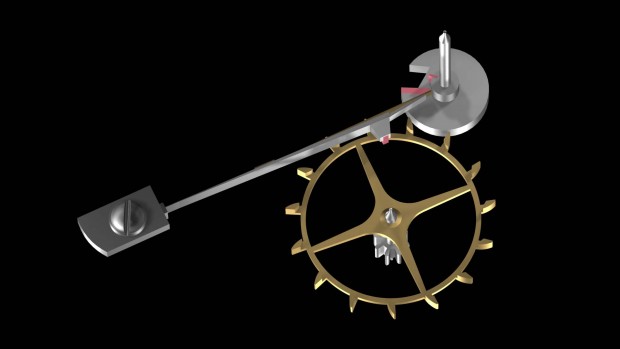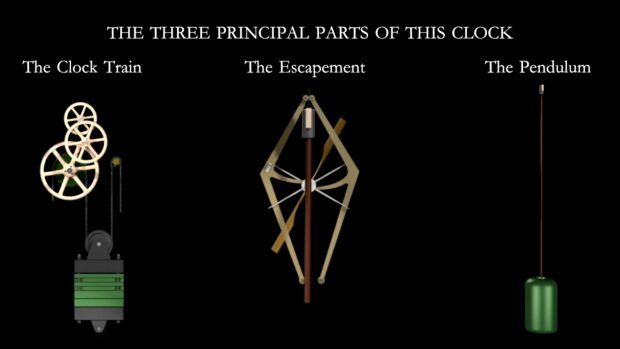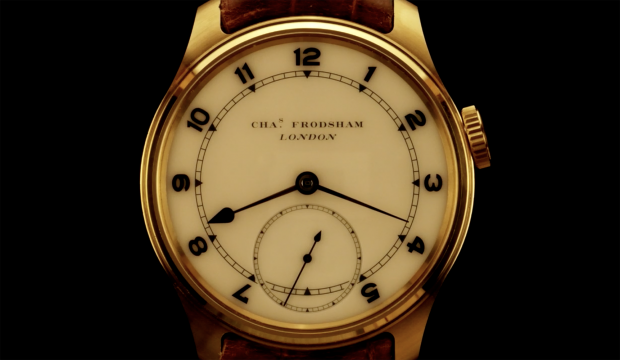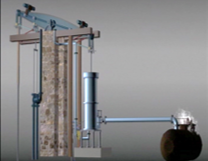The anchor escapement, invented around 1670, marked a significant improvement over the verge. With a pendulum amplitude of only 4° to 6° (compared to 100° for the verge) it allowed the use of longer, heavier pendulums; these had less air resistance and a more consistent swing which reduced wear on the movement. And the slower beat needed less power to keep it swinging.
This led by the 1680s to clockmakers producing longcase or ‘grandfather’ clocks in highly finished and decorative wooden cases, often with a one meter (39-inch) pendulum with a period of 1 second.
Like the verge escapement, the pallets alternately stop and release the escape wheel, one tooth at a time, allowing it to rotate in a regular and controlled manner; as the tooth slides across the face of the pallet as it releases, it imparts a small impulse to the escapement which is transferred to the pendulum via a crutch to keep it swinging.
Although the benefit of the reduced pendulum amplitude was immense, the anchor escapement suffers from three significant problems that confronted the verge – recoil, oil and continual contact with the pendulum or balance.
Recoil pushes back the entire train causing additional friction and wear; and the pendulum or balance can never swing freely.
Anchor escapements continue in widespread use today.

Anchor escapement

Anchor escapement in a Joseph Knibb long case clock, c.1673

These animations are based on an identical pair of Knibb clocks purchased in 1673 for the University of St Andrews by James Gregor, Professor of Mathematics. They were chosen on the recommendation of John Flamstead, later the first Astronomer Royal, for a planned observatory.
The clocks remain in good working order; viewing is by appointment only.
More details at: Knibb Clocks | Collections | University of St Andrews (st–andrews.ac.uk)


